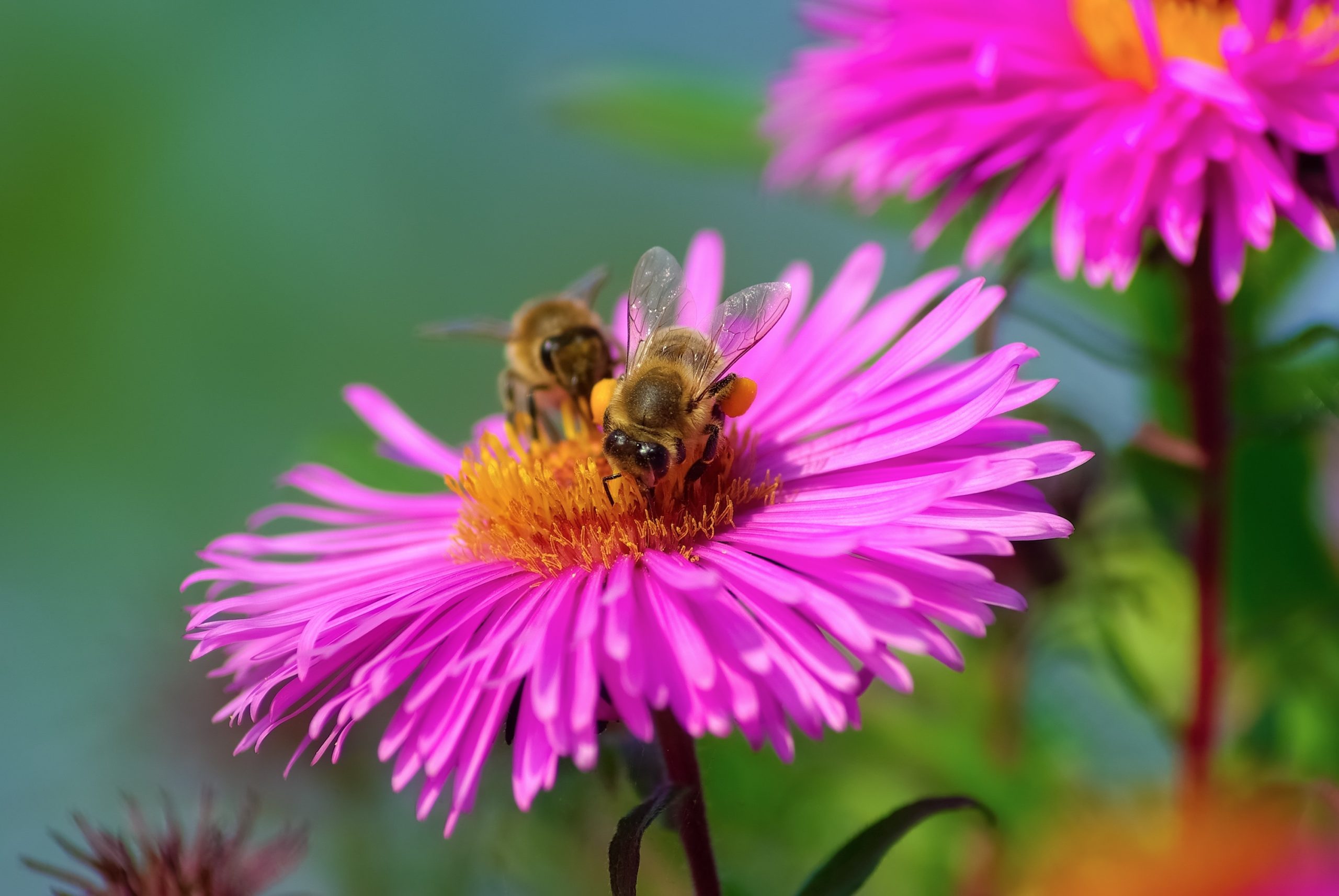Responsible Beekeeping
Being a beekeeper includes responsibilities to your bees and to your community. You bees are depending on you to provide them a safe place to survive and thrive. You must also strive to be a good neighbor and manage your bees so that they do not become a nuisance to the residents around you. This is especially important when your hives are in an urban setting.
The following are some guidelines to being a responsible beekeeper:
Hive Siting
Hive placement is one of the most important decisions you will make. An ideal location is out of the wind, with morning sun and mottled afternoon shade, away from dampness and cold. Hive placement should also take into consideration the flight path of the bees. The flight path should avoid areas of foot traffic, and should direct bees away from places where people and animals congregate or traverse. See the recommendations in the beekeeping reference books for much more information about how to accomplish these goals.
You should discuss your proposed hive location(s) with any nearby neighbors. Let them know of your efforts to direct the bees away areas that they frequent, and that you will work with them to avoid any problems.
Screening, Barriers, Fencing, and Flyways
You should direct your bees flight path so as to avoid neighbors and the public. Bees can be easily directed to leave their hives in an upward trajectory. Screenings, foliage, fencing, trees, shrubs, and barriers can be strategically placed to get bees to fly above head height. This will help to minimize human and animal contact.
Colony Temperament and Behavior
You should monitor your colonies’ temperament and behavior. The temperament of the colony may change in response to many factors, such as food availability, repeated disturbances, or pests. Your job as a beekeeper is to monitor these factors and eliminate them if possible. Colonies that become overly-defensive and cannot be managed to reduce their defensiveness should be relocated or re-queened.
Swarming
Healthy colonies will swarm in an effort to reproduce. In general, a swarm does not behave aggressively, but a swarm in progress can be very disturbing to some people. Consequently, swarming is the source of frequent nuisance complaints about bees.
You should manage your colonies to minimize swarming. The resources in our book and web link sections discuss swarm management extensively. We also dedicate at least one Guild meeting in the spring to the topic of swarm management, so be sure to attend.
This is also an important topic to discuss with your neighbors. Educate them about bee swarming behavior. Let them know that swarms are generally not dangerous (in fact, they are really an amazing event to witness), and you will be managing your hives to minimize their occurrence. Let them know that, should any occur, you will be on hand to deal with them.
Considerate Hive Management
Be considerate to your bees and your neighbors while working your hives. You should perform hive manipulations quickly and with as little disturbance to the bees as possible.
- Work hives when foraging activity is high – i.e. on warm, calm days, when most of the foragers are out of the hive.
- Avoid working your hives when neighbors are nearby.
- Avoid working your hives when your bees are defensive.
- Robbing leads to defensive behavior, so work your hives to prevent robbing activity, or avoid working your hives entirely when robbing is a risk.
- Have a plan before you go into your hive. This will help you to be quick and efficient, and minimize the disturbance to your bees.
- If you find something unexpected while working your hive and don’t know what to do, the best thing is usually to do nothing. Put everything back, and close the hive up. Take some time to decide what to do, and come back another day to do it.
Disease Control
You should monitor and manage your hives for diseases and pests to ensure the health of your colony and of the colonies in your area. There are several diseases that are particularly virulent and can kill colonies, then spread on to the other colonies in the area and kill them too – sometimes very quickly. Learn how to identify diseases and pests in your hive, and how to properly manage them. Again, education is your best defense – read as much as you can, discuss what you see in your hives with other beekeepers, and ask questions at the Guild meetings.
Water
Bees will seek out a reliable source of water in their area. Once they find a reliable source, it is very difficult to get them to abandon it. (One favorite source is the neighbor’s swimming pool.)
It is best if you can provide your bees with a reliable source of water from the beginning, such as a bucket, bird bath, fountain, or similar. The bees seem to like water sources that are somewhat “dirty”, i.e., they have algae growth or may be a but stagnant. The water source should be in the sun, and located some distance from the hive, perhaps further than 20 yards or so. A water source too near the hive tends not to be well used.
If you can get them to use your water source, they will be less likely to bother the neighbors.
